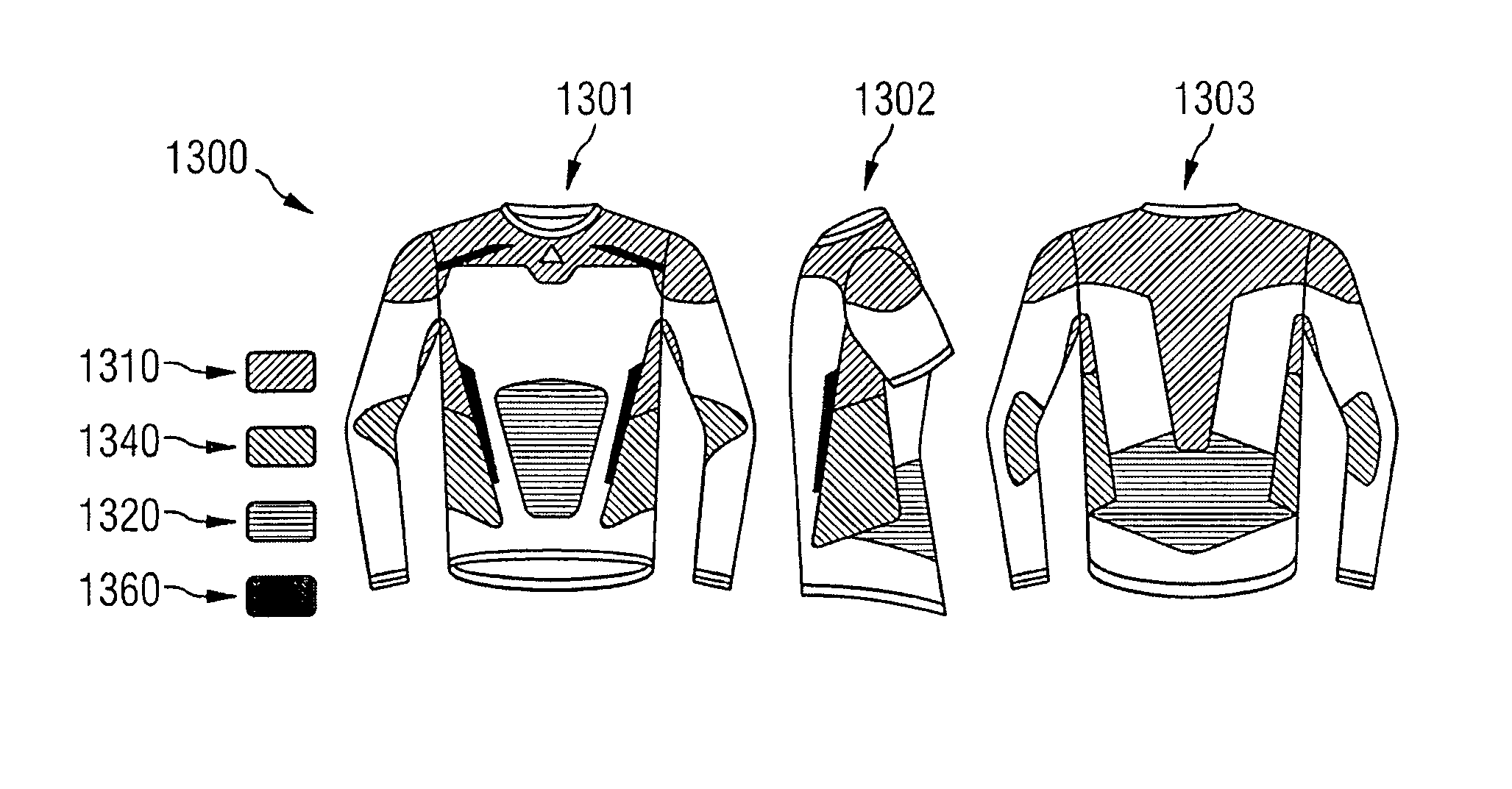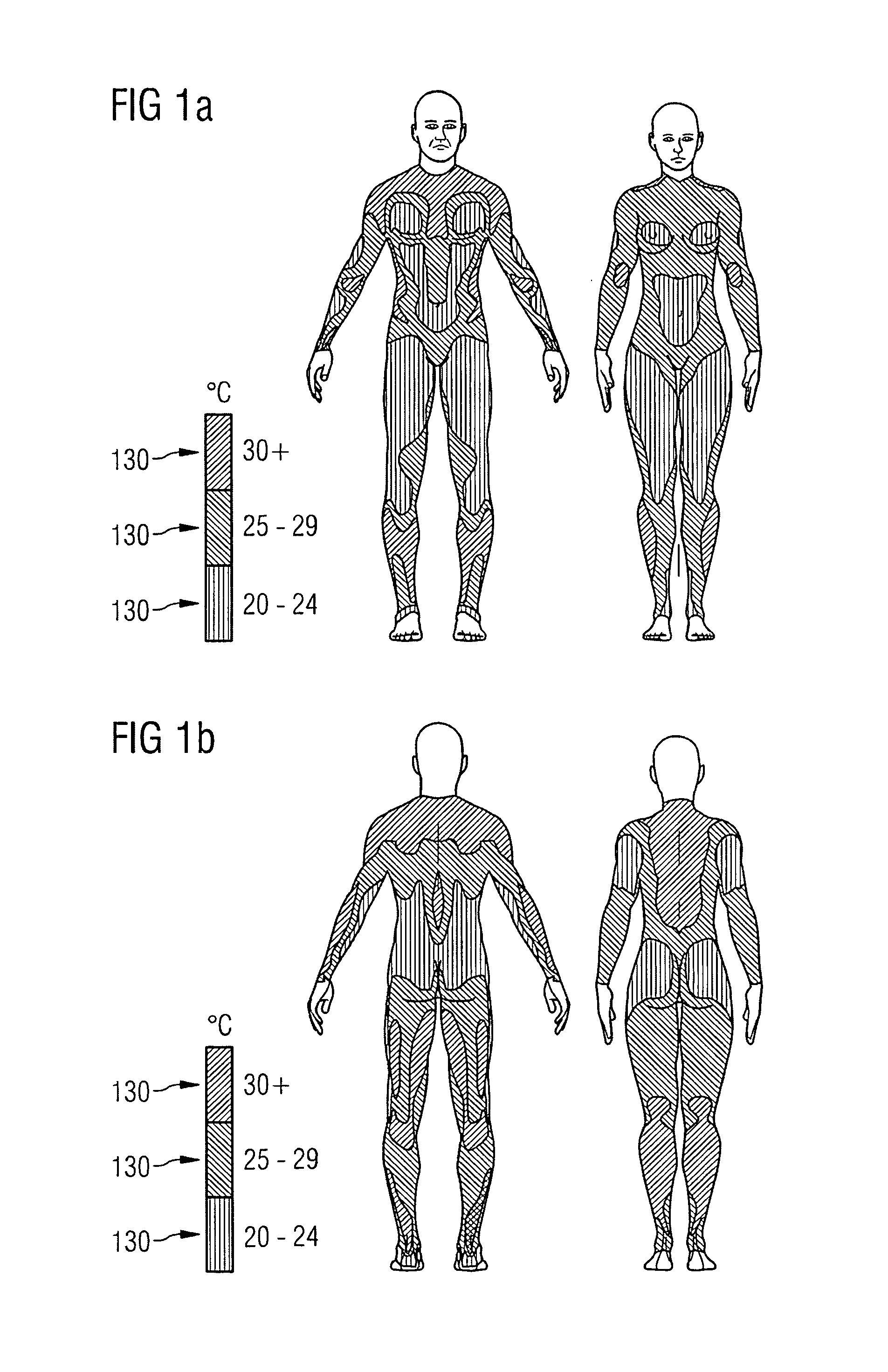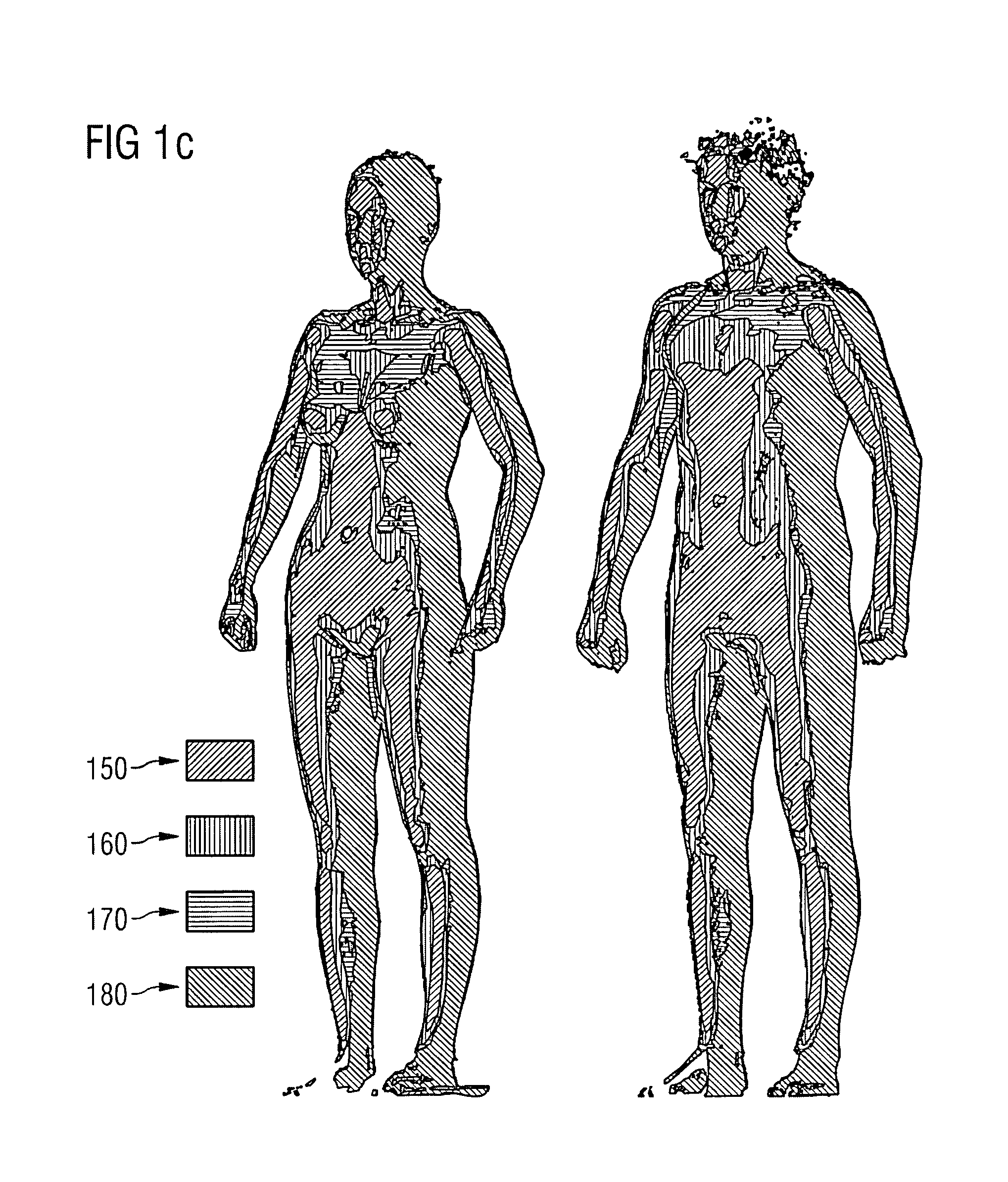Apparel
a technology of clothing and lining, applied in the field of clothing, can solve the problems of sweat accumulation, inability to achieve increased ventilation, and need of additional heat conduction away from these areas, and achieve the effects of increasing the degree of wind protection, reducing sweat production, and reducing skin temperatur
- Summary
- Abstract
- Description
- Claims
- Application Information
AI Technical Summary
Benefits of technology
Problems solved by technology
Method used
Image
Examples
Embodiment Construction
[0066]The present invention will now be described in detail with reference to embodiments thereof as illustrated in the accompanying figures. While specific configurations and arrangements are discussed, it should be understood that this is done for illustrative purposes only. References to “an embodiment”, “one embodiment”, “another embodiment”, etc., indicate that the embodiment described may include a particular feature, structure, or characteristic, but every embodiment may not necessarily include the particular feature, structure, or characteristic. Moreover, such phrases are not necessarily referring to the same embodiment. Further, when a particular feature, structure, or characteristic is described in connection with an embodiment, it is submitted that it is within the spirit and scope of the invention to affect such feature, structure, or characteristic in connection with other embodiments whether or not explicitly described.
[0067]In the following, embodiments and modificat...
PUM
 Login to View More
Login to View More Abstract
Description
Claims
Application Information
 Login to View More
Login to View More - R&D
- Intellectual Property
- Life Sciences
- Materials
- Tech Scout
- Unparalleled Data Quality
- Higher Quality Content
- 60% Fewer Hallucinations
Browse by: Latest US Patents, China's latest patents, Technical Efficacy Thesaurus, Application Domain, Technology Topic, Popular Technical Reports.
© 2025 PatSnap. All rights reserved.Legal|Privacy policy|Modern Slavery Act Transparency Statement|Sitemap|About US| Contact US: help@patsnap.com



